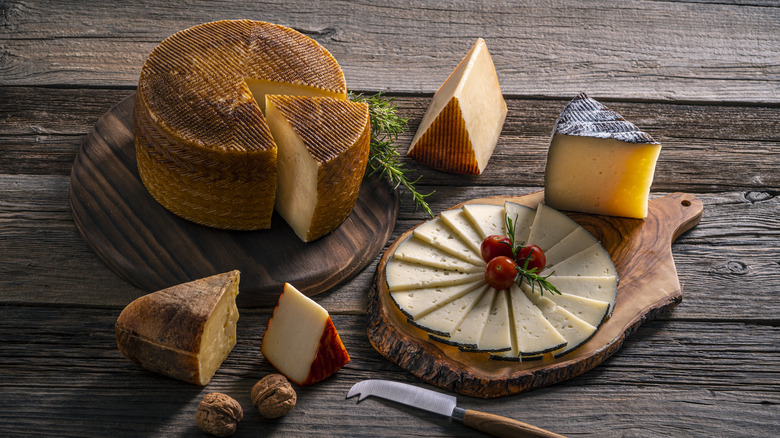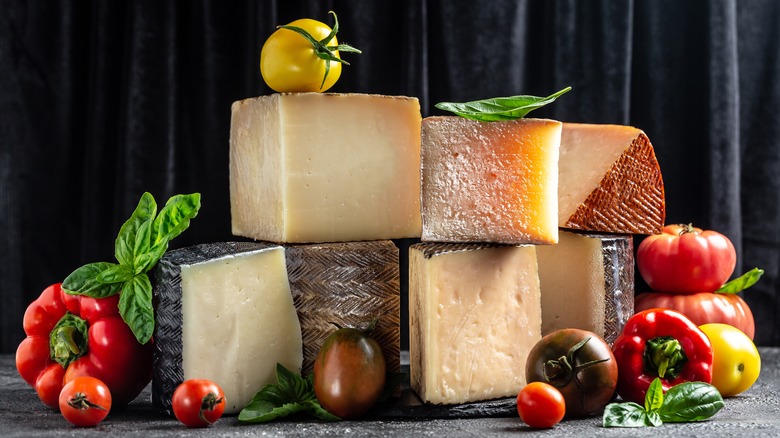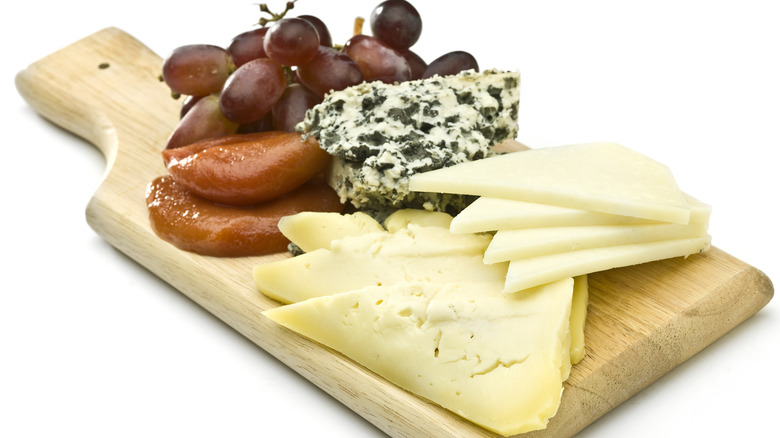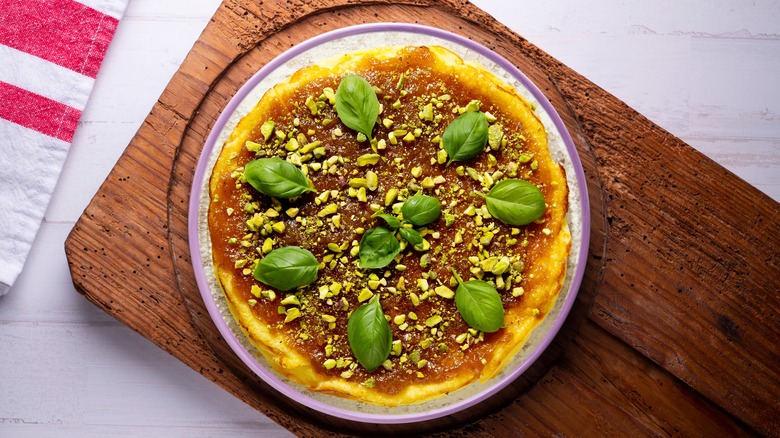Manchego Is The Spanish Cheese With Both Sweet And Savory Uses
If you aren't familiar with Manchego, we're here to fill you in on this Spanish cheese because it's delicious and versatile. Let's start with its origins, which lie in the La Mancha region of Spain. Manchego is made of raw or pasteurized sheep's milk from the Manchega breed, which is native to the region, hence its name.
It's thought to be one of the most popular cheeses in Spain and is protected by the Spanish Denominación de Origen Protegida and European Protected Designation of Origin, meaning authentic Manchego is only produced on registered farms in the region. The protections are similar to that of Parmigiano Reggiano in Italy.
So, how does Manchego cheese taste? It depends on which variation you're biting into (and we'll get into those very soon). But overall, its taste is a blend of sweet and tangy with fruity and nutty notes. This semi-firm cheese has a rind and is aged anywhere from two weeks to two years.
Varieties of Manchego cheese
The types of Manchego cheese are mostly broken down by how old they are. The color, taste, and texture vary, depending on how long the cheese is aged before being eaten. It starts out white in color, then turns light yellow and gets more crumbly as it gets older. Next, we'll get into the four main types of Manchego, with the caveat that there are many other variations. For example, if raw sheep's milk is used it's considered Manchego Artesano, which is aged for one year. There are also Manchego-like cheeses on the market, but these aren't authentic and can be produced outside of La Mancha.
Fresco is the freshest variety. It's only aged for two weeks and has a rich yet mild taste. Because of this, it's not commonly found in the U.S. or other countries. Semicurado (which translates to "semi-cured") is the next variety. This semi-firm cheese is typically aged between three weeks and three months, giving it a fruity flavor with tangier notes. Next up is Curado, which is aged for three to six months and has a firmer, denser texture. Its flavor is nutty with a distinct sweetness. And the final type is Viejo, which is aged for one to two years. This gives it a firm texture and a sharper and saltier taste compared to the other varieties.
How to use Manchego in savory dishes
One of the best parts of Manchego is its versatility. It can be used in many different dishes and pairs well with other types of cheese on a charcuterie board. In Spain, it's commonly served raw with cured meats. But there are many uses, especially in savory dishes. It's worth noting that older Manchego cheeses don't melt very easily, so you should use the Semicurado variety to make things easier if you plan on melting it.
For cooking, here are a few of our favorite ideas for Manchego. A simple way to elevate this Spanish cheese is to marinate it with garlic and fresh herbs in olive oil for up to three days and serve it with toasted bread. You can also shred it and stir it into your favorite macaroni and cheese recipe. To pair it with another Spanish delicacy, throw chorizo into the macaroni and cheese for next-level flavors. Other savory possibilities include adding Manchego to a salad with pears, breading chunks of the cheese and deep-frying it as tapas (almost like mozzarella sticks), or grating it over your favorite pasta dishes.
It's great for sweet dishes, too
Because Manchego has a mildly sweet flavor — one reason it's often eaten raw — it can easily be used in sweet dishes. For example, you can pair it with fruits for a fresh, sugary bite. Cut it into triangles and pair it with figs, citrus fruits like oranges, apple slices, pears, or a marmalade. You can also pair it with any of these sweet fruits on crostini.
When it comes to cooking desserts with it, you can get creative. Just remember that it takes a while to melt if you don't opt for the Semicurado variety. There are many recipes online for mixing it with quince, a fruit similar to a pear. With this route, you can make use of quince paste to make a filling for turnovers or dessert-style chimichangas. A final, and perhaps the most delicious, way to use Manchego is to incorporate it into Spanish-style or other varieties of cheesecake. It also works well alongside fruit puree or crushed pistachios as a topping.



